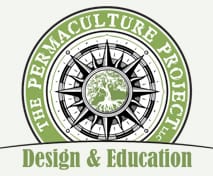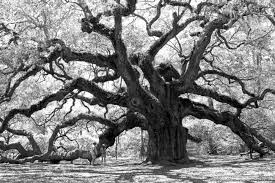Oak Tree
I was three years old then. They planted that young oak tree in front of my house in suburban New Jersey. I was small and the oak seemed a mighty giant, its pointed leaves and unusually shaped fruits, a delight to a child’s passionate eye. It became a neighborhood challenge to see who could scale the oak and hold on for dear life as the wind blew and the top swayed. It’s been fifty or so years now. I’ve gone back to visit that tree. It’s still larger than life. The massive trunk many times the diameter of my torso, enough acorns to feed a thousand squirrels.
A friend for life, whether in the city or the wilderness, oaks abound in city parks, backyards, forests of North America, and the world. The pointed leaves of my youthful acquaintance appear on red oaks as opposed to round-lobed leaves on white oaks. These are general categories as a beginning point in identification of species. At times it is difficult to identify any one of the fifty-eight tree or ten shrub species of oak in the US because of countless leaf shape variations and the tendency for different species to hybridize. One indicator is the tiny bristles appearing at the tips of the leaves and lobes on the red oak.
Red oak acorns are more bitter (have a greater tannin content) than white oaks and take two years to mature. Woolly hairs line the acorn cup. The bark of red oak is gray to reddish-brown and vertically fissured. Growing up to ninety feet tall, with alternate, seven to eleven lobed leaves. It is the fastest growing of the oaks, adding two inches in diameter and twelve inches in height per year.
The white oak grows upwards of a hundred feet. The leaves sprout alternately with five to nine rounded lobes. The acorn cup is shallow, smooth on the inside, has knobby scales on the outside and covers twenty-five per cent of the acorn, which matures in six months. The bark is whitish-gray and scaly. White oak lumber is the preferred wood of cabinet making, finish work and veneers amongst woodworkers.
Oaks are excellent habitat indicators, mostly proliferating in hydric-mesic (wet and well-drained) areas, but some can be found in dry (xeric) areas. Oaks inhabit eastern oak-hickory forests, mixed Appalachian forests, northern pine-oak forests, alpine communities, Great Basin desert-mountain slopes, Midwestern savannahs, Californian canyons and grasslands. They are the most widespread broad-leaved trees in America. The scarlet oak, willow, blackjack, bur, live, scrub, swamp, chestnut oaks. Virginia live, turkey, myrtle, post, pin, chinkapin, red, white, shumard, shingle, overcup oaks, the list goes on and on.
The delectable acorn is a mouthful for birds and mammals during the lean winter months. Jays, grosbeaks, wild turkeys, ducks, scarlet tanagers, quail, grouse, woodpeckers, titmice, pigeons, larks, nuthatches, grackles, varied thrushes, squirrels, chipmunks, raccoons, bears, deer, feast on them. Gray squirrels will go to any acrobatic length to acquire them. The squirrels tend to eat more white oak acorns than red (apparently the higher tannic acid content of red acorns is a mild deterrent) and they will bury others for later use. The forgotten acorns of the buried batch help to disperse and propagate new stands of oak. Bear, rabbits, squirrels, and other fur bearing and game animals also eat the bark and wood of the oak. Hoofed browsers such as deer, elk, peccary, and sheep munch on twigs and foliage.
Whereas the Cattail is called the “supermarket of the swamp”, the oak (quercus spp) could be called the “department store of the forest”. Different parts of the oak can be used as a wild or cultivated edible, a medicinal and first aid remedy, for crafting splint baskets, as a dye, and to build structures and make tools.
Because of the bitterness in acorns, when used as an edible, the tannic acid content must be leached out. When used as a medicinal the tannic acid, as we shall see shortly, remains, and is a viable part of the miraculous healing properties of the oak tree. The white oak contains less tannic acid than the red oak and it’s acorn is much sweeter, but nonetheless, the white acorn must also be leached of its tannic acid contain for consumption.
Boil the acorn kernels in several changes of water until the water does not turn its characteristic brown color. The kernels can also be dried, mashed or ground, and placed in a tightly woven, porous bag and then boiled or left in a swift running stream for a number of days to remove the bitterness and astringency. Once the tannic acid has been removed the acorns can be eaten whole or dried, ground into flour, and used in breads, muffins, soups or ashcakes. There is no gluten content in acorn flour, so, if making bread, acorn flour will not hold together as wheat does. Better that it be used as an additive than to attempt to use it by itself in breadmaking.
Ashcakes are a delicacy not to be missed by backcountry travelers and collectors of acorns along the byways and front lawns of America. Mix acorn flour with water until a doughy consistency is obtained, knead into a flat, round pancake, fold over (one can put raisins, brown sugar, whatever pleases the palate inside before folding as in a turnover), place in hot ashes and coals on an open fire. Endless variations are possible. Native peoples would make ashcakes and take them along on excursions as a delicious and nutritious food that would last for many months.
As a first aid and medicinal remedy oak bark has excellent internal and external uses. Prepare a decoction of oak bark as a gargle for sore throat after a cold night in the brush or resulting from a drafty window. As a skin wash for cuts, scrapes, and insect bites it is especially soothing. After sloshing through a mosquito dense swamp chew a bunch of oak leaves, rub and poultice them on the bites and enjoy quick relief. As an astringent for all kinds of ailments oak bark is applied topically to fever blisters, herpes sores, ringworm ulcers, varicose veins, and various other skin disorders in the form of a fomentation or salve. Apply fomentations throughout the night to swollen glands, lymphatic swellings, goiter and mumps. Oak bark decoction is an excellent douche for vaginal infections and a retention enema for hemarrhoids.
Internally, decoct and drink sparingly for diarrhea, bladder weakness, bleeding in the stomach, lungs and rectum, hemarrhoids, prolapsed uterus, and varicose veins. A teaspoon of the decoction is snuffed up the nose to stop nosebleed. Oak bark is highly antiseptic. It will clean the stomach, clear mucus discharge, help remove gall and kidney stones.
Because white oak (quercus alba) wood is strong and close-grained it makes excellent splints for basket weaving. It is split several times to suitable thickness, shaved down smooth, and allowed to dry. Soak when needed.
The bark of the black oak (quercus valentina) makes a brilliant yellow dye for basket elements or cloth. The black oak can be found in the Midwest, eastern Texas, Florida, and as far west as Nebraska. When scratching a twig with a fingernail, a yellow or orange color will appear. Collect the bark from a fallen tree. Heat bark with a mordant in water until it dissolves. Yellow color will be present. Place an article to be dyed into the bath until the desired depth of color is reached. Cool down and rinse.
For wood crafting the oak is amazing. White oak (quercus alba) is superb for creating a bow (remember the arrows!). It’s close grain and resiliency allow for maximum tiller (bend). It is especially suited for traditional, lengthier, Eastern Woodlands, native style bows. Excellent for fish and frog spears, pump drill weights (a Native drill), any kind of project requiring a strong, rot resistant, beautiful wood.
The tannic acid content of any part of the oak tree is utilized for tanning animal hides when the brain of the animal (traditionally used for tanning) is not available. After the hide is scraped of fat, meat and hair, it is soaked and wrung out several times in a solution of brains and water or oak tree decoction. It is kneaded until dry. The natural brain tanning or plant tanning process assures the softest and most beautiful of all leathers.
There are over sixty references to oak in the bible. Druid rituals revolved around the sacred tree, and Zeus’ oracle was in the midst of an oak grove at Dodona. Stability, longevity, strength, beauty.
“The Great Swamp national Wildlife Refuge in the Watchung Mountains of Basking Ridge, New Jersey has always been a great source of study and enjoyment for me. Many years ago, in the dead of winter at the Great swamp, while tracking a red fox through the snow on his daily mealtime hunt, I came around a bend and was stunned to see before me a massive trunk the likes of which only myths speak about. I would have fallen to my knees if it weren’t for the enticement this old granddaddy set before me. Climb! Yes, come climb me! As though in trance I did just that. As I climbed higher the cold wind slapped at my face, turned the few remaining brown leaves into ancient chimes, and the branches creaked like old floorboards. I climbed higher and higher into the crystal blue winter sky. And just as I reached the top a gaggle of a thousand yawping geese flew just above in their characteristic V formation. Chills ran wildly up my spine, a combination of excitement, brisk cold wind, utter joy. The sacred oak stands at the center if its world in divine majesty.
In Permaculture systems oaks are planted as an overstory tree. With all of its thousands of functions for human use and the ecological services that it performs, a designer cannot go wrong if the oak is selected as the essence of a plant matrix. In most neighborhoods across the US there are already a proliferation of oaks. It is up to us to insert a diversity of plants in the understory of the oak for our plant guilds, or to forage the neighborhood in autumn when the acorns come ripe.


